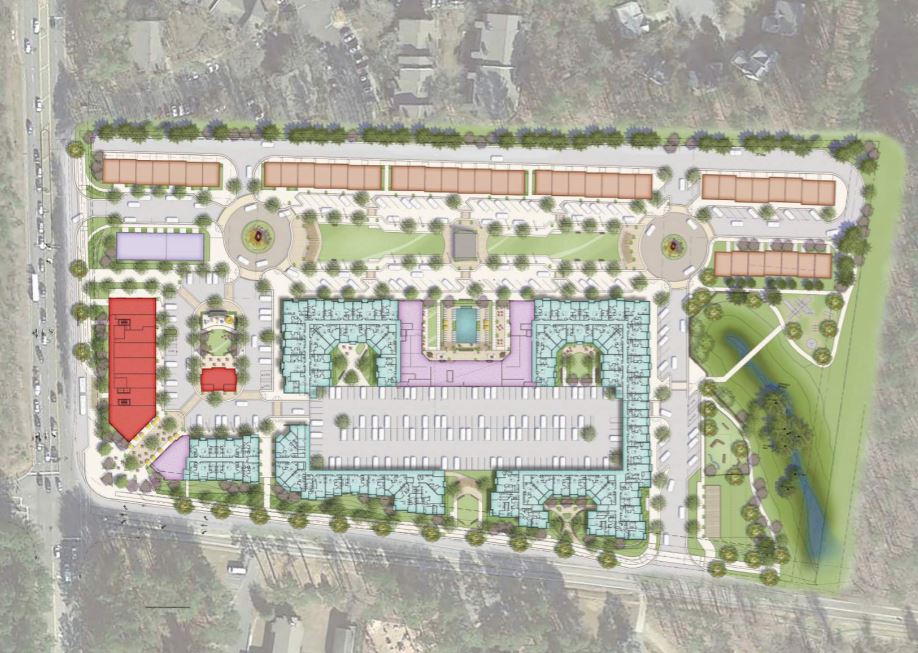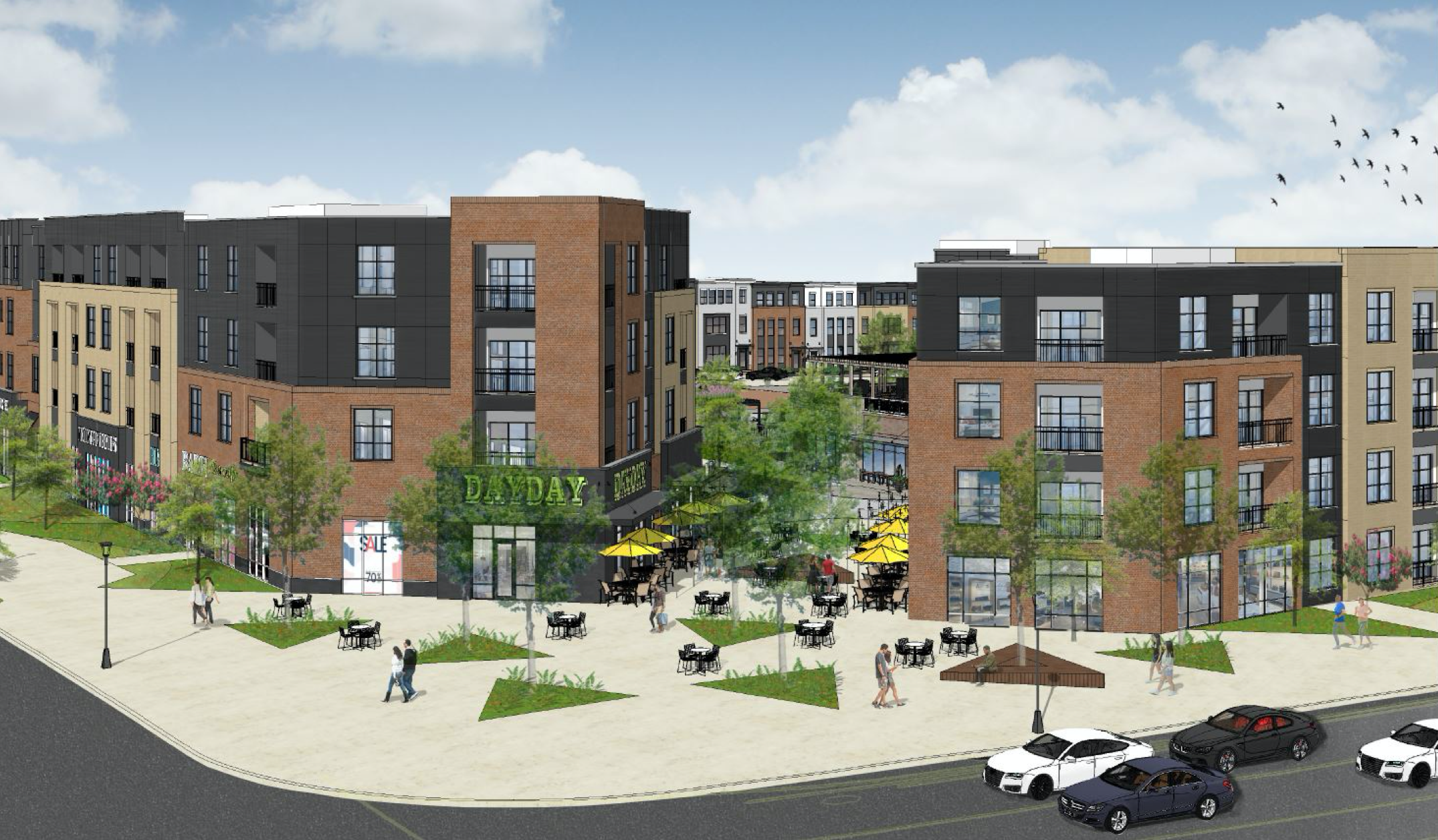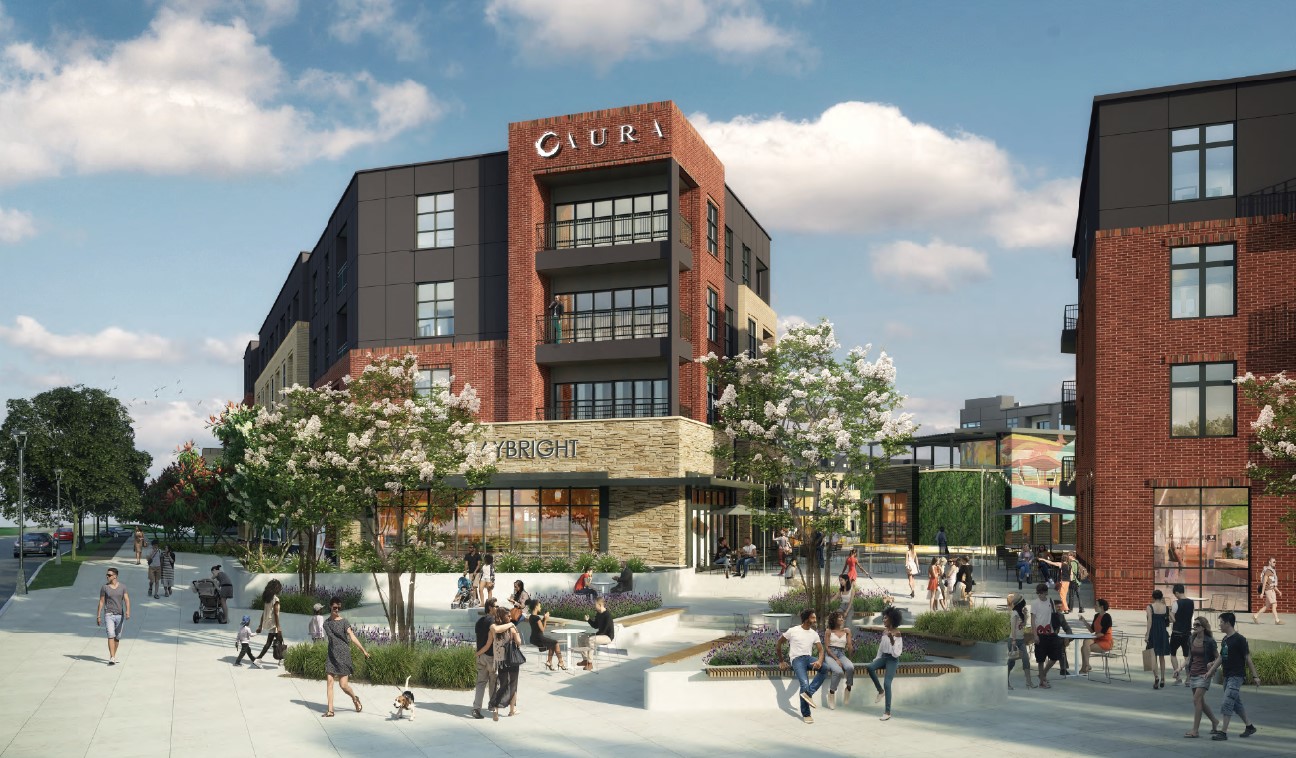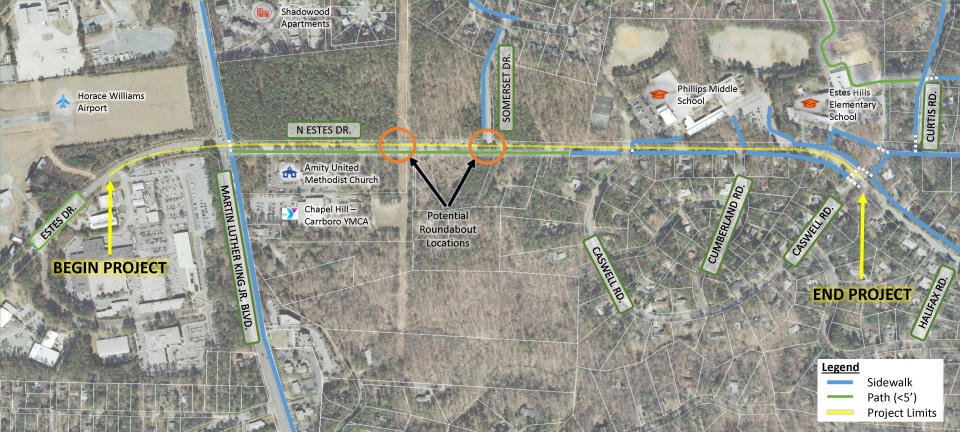A Chapel Hill advisory board met for a special meeting Monday to officially recommend the proposed Aura development to the town council – with a few conditions.
Chapel Hill’s Community Design Commission (CDC) hinted at support for the mixed-use development at the corner of Martin Luther King Jr. Boulevard and Estes Drive at its meeting last week, but first wanted more details about how it would look.
The applicant, Trinsic Development Services, is asking the town to rezone a 16.2-acre site from residential to office and institutional use with a mix of apartments, townhouses and a small amount of commercial space.
The commission requested information outlining building elevations, allocated parking and landscaping buffers – which the applicant addressed at the meeting on Monday.
While the Aura development was officially recommended by the CDC with a 3-2 vote, there were still several concerns regarding the development’s northern buffer, which runs along neighboring communities.
Currently, the applicant has roughly 100 feet of space acting as a buffer between the development and the Coker Woods community.
Chris Berndt, one of the dissenting votes on the CDC, said that is not enough.
“I’m concerned that the central-west area plan called for a substantial northern buffer – I think that there needs to be a lot of changes in the buffer to make it accessible and be a good neighbor to the adjoining residents,” Berndt said. “I don’t think the current plan is satisfactory in that regard.
Another concern for CDC members was the development’s allocated parking.
As it stands, the Aura development includes 650 total parking spots – with 360 spots confined to a parking deck at the center of the project.

Overview of Aura project (Photo via Trinsic Development Services)
At Monday’s meeting, project officials said they already altered their plan to bring the number of spots down to the current number – saying the parking ratio is 1.5 parking spaces per unit.
The site proposal includes approximately 419 apartment units and townhomes with 15 percent, or 40 of those units, being marked as affordable. Affordable housing in Chapel Hill is housing that costs no more than 30 percent of a household’s income.
Project officials say those 650 spots will not just be for residential units, but also for the retail space. Outside of townhomes and apartments, the Aura project includes about 15,000 square feet of commercial space.
The other dissenting vote, Susan Lyons, said the development should make more use of current bus systems to rely less on parking.
“The number of spaces are creating the problem,” Lyons said. “If it’s that transit-focused, I’d like to see this project make a commitment to be transit-focused and use the BRT system. I think the site plan is great, but the thing that concerns me most is the parking.”
Outside of initial, predominant concerns regarding the northern buffer and parking, some CDC members also targeted the overall feel of the building.
As a stipulation to his recommendation of the project, John Weis said he wants the buildings to feel “lighter.”
“This is going to be a substantial introduction of architecture into an area that has none right now,” Weis said. “It seems to me that the building ought to be much lighter – and I mean the feel of the building ought to be lighter. What has been shown to us are very heavy buildings and so I’m willing to second [this project] with the admonition that when it comes back I want to see a much lighter building.”
The CDC recommended the Aura development to the town with requests that the applicant reassess the northern buffer and work to make the buildings have a lighter feel.
Stipulations or conditions provided by the CDC are open for review between the council and the applicant, however they only serve as recommendations.
The Town of Chapel Hill is scheduled to host a public hearing on the Aura development on April 21.
Lead photo via Trinsic Development Services.
Chapelboro.com does not charge subscription fees. You can support local journalism and our mission to serve the community. Contribute today – every single dollar matters.









